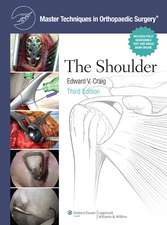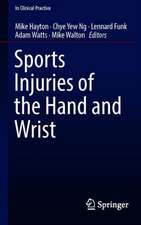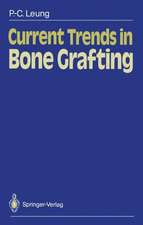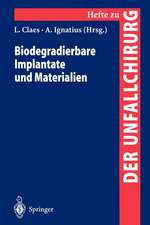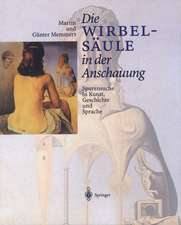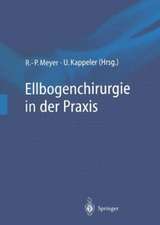Manual of Cementing Technique
Autor K. Draenert, Y. Draenert, U. Garde, C. Ulrichen Limba Engleză Paperback – 22 feb 2012
Preț: 359.78 lei
Preț vechi: 378.71 lei
-5% Nou
Puncte Express: 540
Preț estimativ în valută:
68.84€ • 71.88$ • 56.85£
68.84€ • 71.88$ • 56.85£
Carte tipărită la comandă
Livrare economică 15-29 aprilie
Preluare comenzi: 021 569.72.76
Specificații
ISBN-13: 9783642642463
ISBN-10: 3642642462
Pagini: 132
Ilustrații: XII, 114 p. 112 illus. in color.
Dimensiuni: 155 x 235 x 7 mm
Greutate: 0.2 kg
Ediția:Softcover reprint of the original 1st ed. 1999
Editura: Springer Berlin, Heidelberg
Colecția Springer
Locul publicării:Berlin, Heidelberg, Germany
ISBN-10: 3642642462
Pagini: 132
Ilustrații: XII, 114 p. 112 illus. in color.
Dimensiuni: 155 x 235 x 7 mm
Greutate: 0.2 kg
Ediția:Softcover reprint of the original 1st ed. 1999
Editura: Springer Berlin, Heidelberg
Colecția Springer
Locul publicării:Berlin, Heidelberg, Germany
Public țintă
Professional/practitionerCuprins
1 Historical Background.- 1.1 Conditions Before Charnley.- 1.2 John Charnley.- 2 Histomorphology of the Bone-to-Cement Contact.- 2.1 The Cemented Total Hip Arthroplasty.- 2.2 Histomorphology of the Bone-to-Cement Contact (Animal Experiments).- 2.3 Histomorphology of Human Samples.- 3 Can Cancellous Bone Carry the Load?.- 3.1 About the Deformation Behavior of Spongiosa.- 3.2 Deformation of Bone Through Different Implants.- 3.3 Stiffening of Spongiosa with Bone Cement.- 4 Approach to the Hip Joint.- 4.1 Posterolateral Approach.- 4.2 Transgluteal Approach.- 5 Preparation of the Acetabulum.- 5.1 Preparatory Steps.- 5.2 Exposure of the Acetabulum.- 5.3 Fossa Acetabuli.- 5.4 Preparation of the Bony Acetabulum.- 5.5 Anatomical Composition of the Joint Surface of the Acetabulum.- 5.6 Lavage, Anticoagulation and Stiffening of the Acetabular Roof.- 5.7 Inclination and Alignment.- 6 Preparation of the Bone Cement.- 6.1 Advantages of Standard Viscosity Bone Cement.- 6.2 Cold Storage as a Simple Method To Achieve a Temporarily Lower Viscosity.- 6.3 Homogeneous and Bubble-Free Mixture.- 6.4 Prepressurizing Bone Cements, a Conditio Sine Qua Non.- 6.5 Application of the Bubble-Free Bone Cement.- 7 Preparation of the Femur.- 7.1 Opening of the Medullary Canal and Implantation Axis.- 7.2 Surgical Diamond Instrumentation.- 7.3 Drainage of the Medullary Canal.- 7.4 Preparation of the Implant’s Bed.- 7.5 Lavage.- 7.6 Plugging the Medullary Cavity.- 7.7 Heparinization, Cementation, and Implantation.- 8 Scientific Background of Vacuum Application.- 8.1 The Problem of Thromboembolism and Drainage of the Medullary Canal.- 8.2 The Distal Drill Hole.- 8.3 The Stem-Canal Volume Relationship.- 9 Consideration of the Prosthetic Design of the Femoral Stem.- 9.1 Stiffening Spongiosa of the Femur.-9.2 Calcar Femoris.- 9.3 Stem Design.- 9.4 Preoperative Planning.- 9.5 Centralizing Anatomical Design.- 10 Instrumentation.- 11 Conclusions: The Success of Cemented Components.- 11.1 First-Generation Cementing Techniques.- 11.2 Success of the Cemented Component Is Due to Stiffened Bone Structures.- 11.3 Cancellous Bone Stiffened by Bone Cement Can Survive.- 11.4 Preservation of Cancellous Bone.- References.- Author Index.
Caracteristici
Unmistakable step-by-step guidance through operative technique Clear line drawings and diagrams Clear anatomical drawings and histological colour illustrations Covers all possible complications of cemented joint prostheses Provides clear instructions for the prevention of complications and eventual complication management

